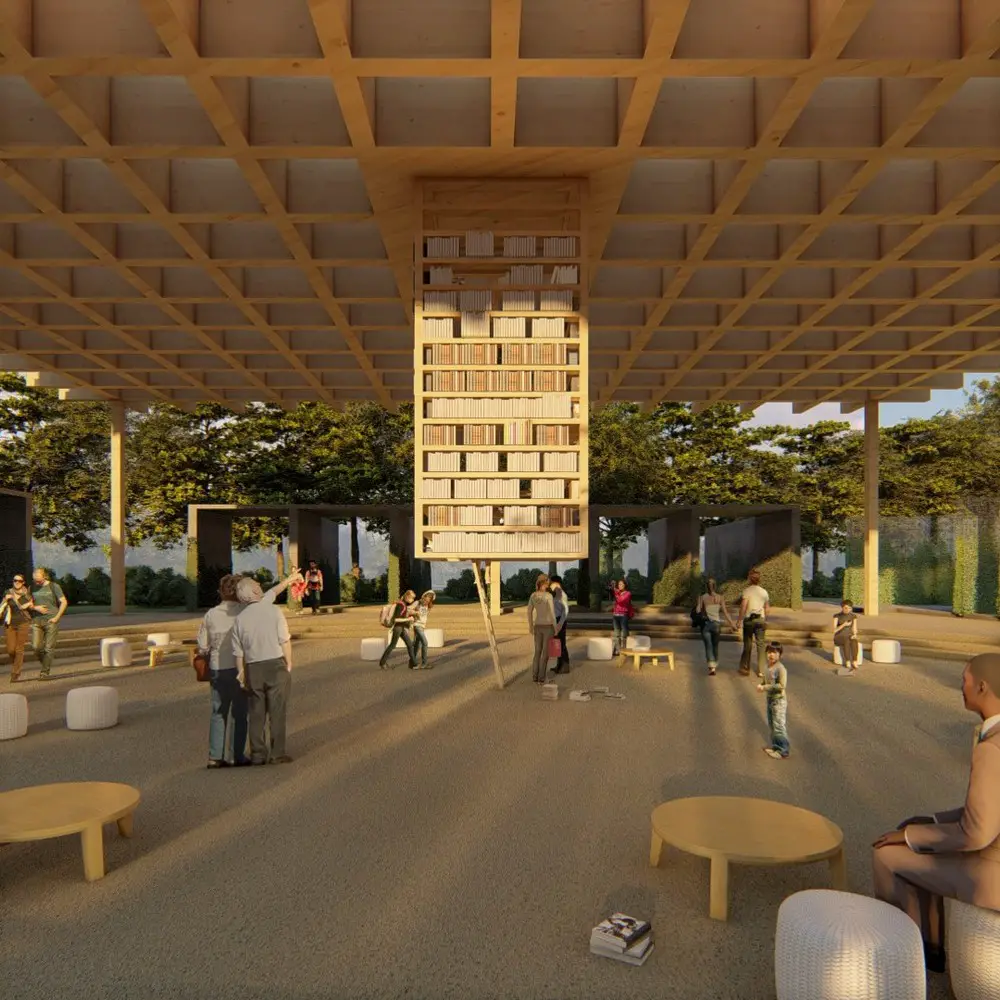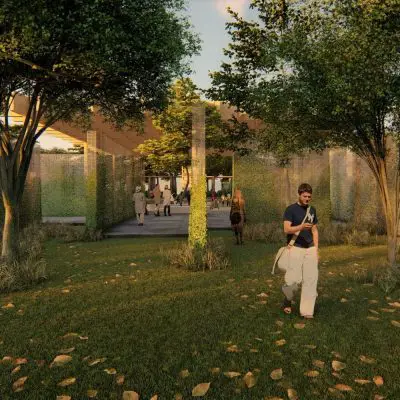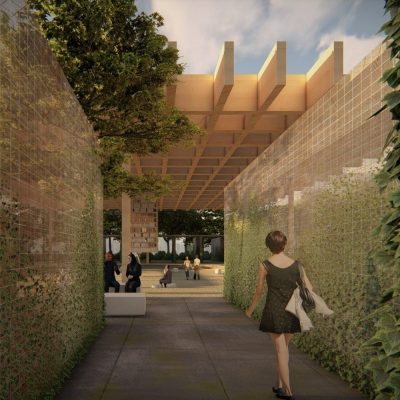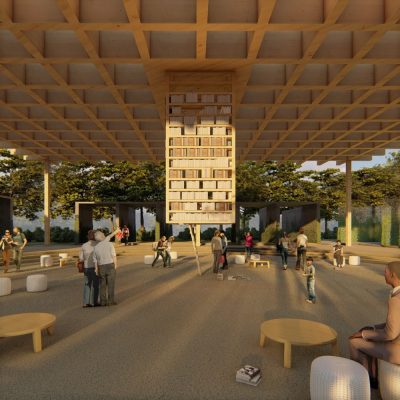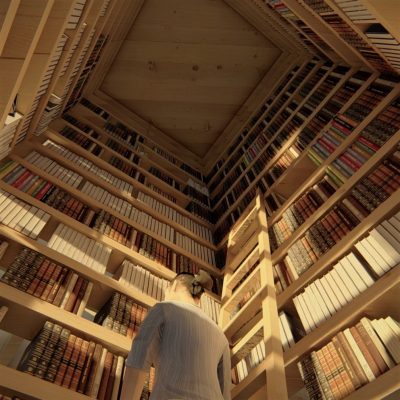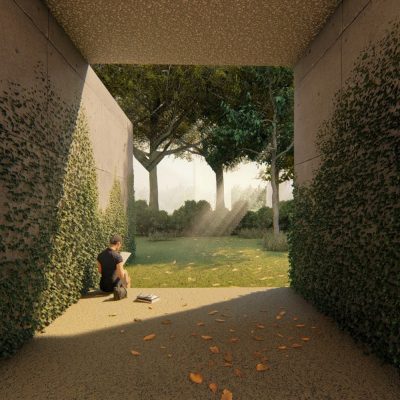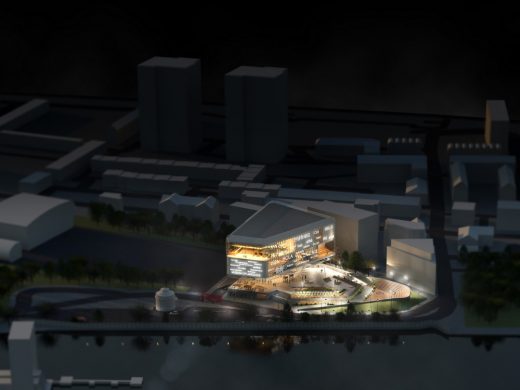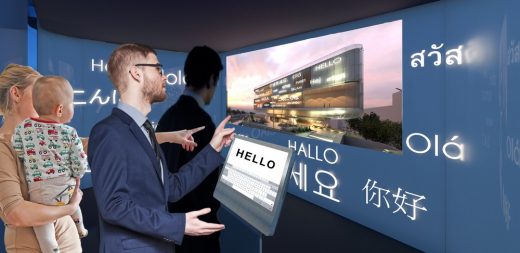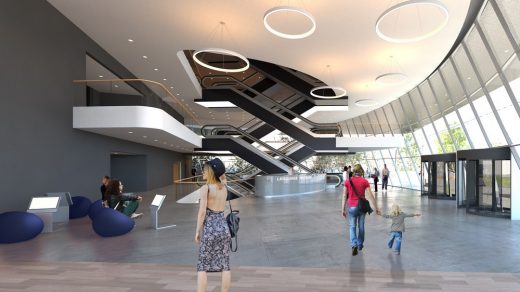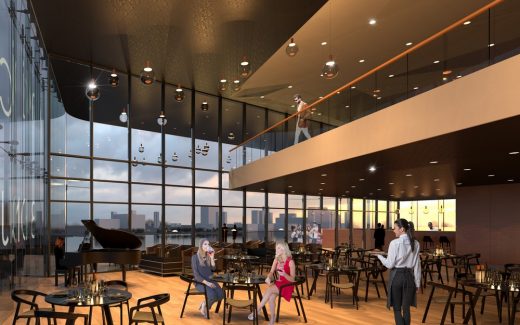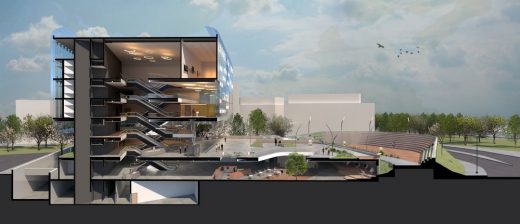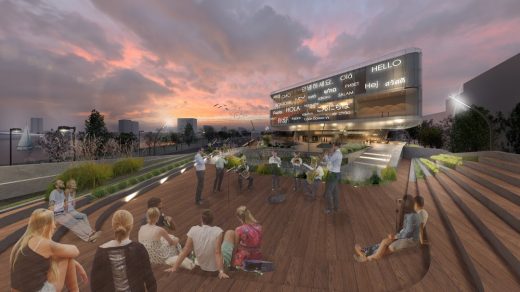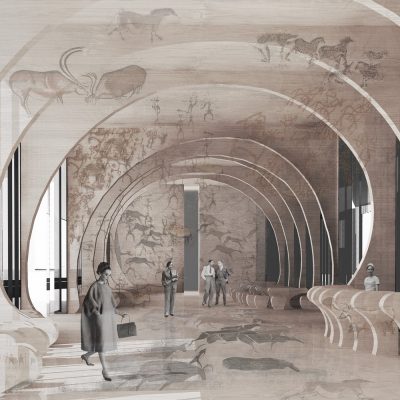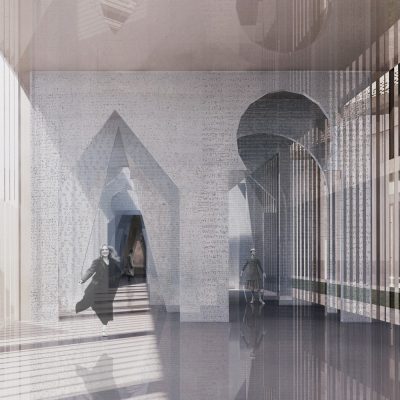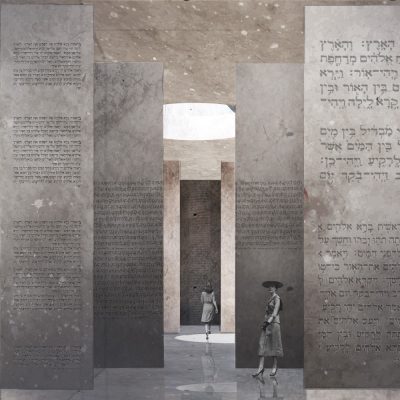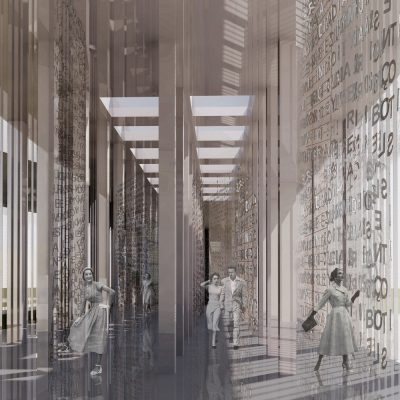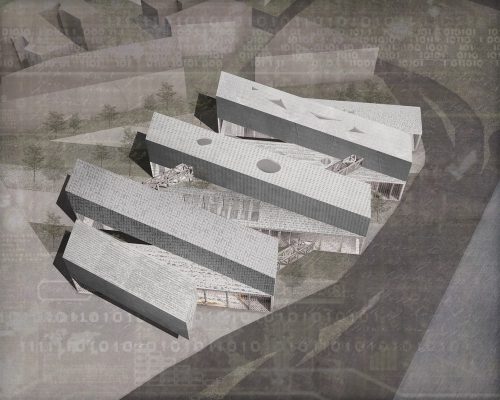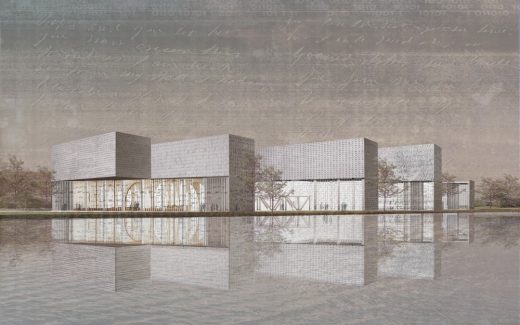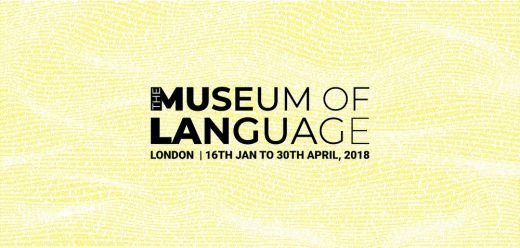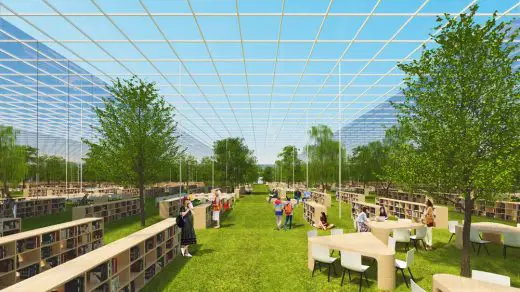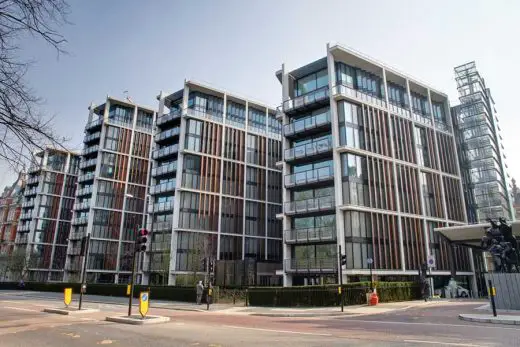2018 Museum of Language London Design Competition Winners, Architecture Contest, Building, Architect
Museum of Language London Competition
Winners of UK Architecture Contest by archasm, India: Architectural Prize News
1 Jul 2018
Museum of Language London Competition Winners
Museum of Language London Architecture Contest Winners
First prize: Ayaz Pasha, Vishweshwar Singh, Jabili Sirineni (India)
Language is universal. It is a spectrum that is ever-changing and diverse. Language can be deconstructed into its basic elements, but it can’t be preserved in the same form. Because of its constantly changing dynamic character, it becomes an intangible cultural resource. While some languages are extinct, some are invented every day. But language dwells everywhere in the world, and architecture can simply provide a space that makes the users experience it.
Our general idea of museums has been of artefacts displayed around the space with descriptive explanations. The users of a typical museum are only passive recipients and not actively involved in the system of conserving the subject. An abstract like language requires the users to be more than just spectators.
In the context of the city of London where people speak a diverse range of languages a museum of language could only be created by inviting people to experience spaces where language is not merely an artefact but the very function. The aim of the proposal is elevating language as the only defined function and deriving spaces around it. The objective of the design must be to invoke users’ movement and behavior in a certain way by manipulation of proportions and interaction patterns.
The proposal is a simple set of five types of spaces that are made distinct from each other in terms of volume and therefore, experience. The user enters the Museum through a parallel series of walls that form galleries and pockets of interaction. All the paths of the galleria lead to a passage, an ambiguous space between the gallery and the open expanse ahead which forms the core of the design, in terms of space and function.
The core is circular in plan and becomes the podium for interaction between people. The lines of sight from all points of the circle lead to a shaft of books that continues to the roof. The shaft is envisioned as a floating entity that can be accessed from beneath. The shaft is conceptualized from an idea of a universal library that at once belongs to all languages and no particular language.
Further ahead almost mimicking the galleria is another set of walls characterized by a frame that forms small modules of spaces designed for one individual. Every frame opens into the landscaping that almost overlaps with the building. The vista of the landscape gives the space a sense of calm isolation.
The entire space is in transition, the users, ever-moving along with the constant evolutionof thoughts in their minds – language being created and exchanged. This transition is held together between a simple ‘platform’ and a grid roof that follows the same lines as the galleria.
Language is indeed a river
-converging, diverging
and intersecting
Flowing its course
Dying only of disuse
It cannot be boxed in glass
Or fixed with screws
Its infinity can only be sensed.
In this Museum of Language,
we travel through space
and not time
from linearity to ambiguity
From clarity to question
To enter an expanse
Towards communication
And comprehension
And looking out again
We walk into a frame
Of solitude in thinking
And thus is language curated
In the movement
of people and of thoughts
in their minds
Second prize: Manuela Blasco Markarian (Argentina)
The LANGUAGE BUBBLE is an interactive building, conceived as a metaphoric form of a speech bubble, representing language itself.
Visitors write messages from the interior of the building that are translated and projected on the main façade.
This creates a dialogue with the guests in the outside plaza, bringing cultures closer, celebrating diversity in an interactive manner.
The text projects on the glass thanks to new LED technologies, like LightPoints™ in Motion, where LEDs are embedded between the layers of glass and sealed with resin.
The museum generates its shape from the neighbors’ limits, creating an open plaza with views to the Thames.
The public space is elevated so that the water is visible over the protective wall. The plaza presents dynamic spaces with performance zones promoting social activities. These areas interplay with the interactive facade in the background, transforming the building into the main icon of the scene.
Third prize: Zofia Fedorów (Poland)
The project ‘Serpentime. The Museum of Language in London’ is a reflection on the origins of the language. The aim of this project is to present the problem of language globalization, which opens vast amount of possibilities, but it also leads to language disappearance.
We tend to unify our speech, losing the values of national dialects at the same time. What technology enables us is an access to information and worldwide communication but it also makes our language more primitive. It is much easier to express emotions through emoticons or gifs. This, as a consequence, might cause problems in language communication in real life. Our communication ends where it started, with simple sounds or images.
The whole project is based on the idea of language evolution. The timeline has been created forming the meaningful base of the whole project. Taking the context into consideration, the linear form has been squeezed in order to display its shape from the side of the river and the street. This is how the SerpenTime shape has been created. The name itself is a combination of the word ‘serpent’ – the movement of the snake which is the shaping of the building and the passing ‘time’, which constitutes the main idea of the project.
The visitors start and finish their journey in an entrance hall, where the first languages are displayed. The hall is covered with wood, imitating irregular cave and presents basic forms of the language, illustrating human thoughts via pictures as in case of the cave drawings.
The next step is dead languages, extinct, with no users, such as Sumerian language. The room is made of glass and architecture archetypes, related to the certain language groups. The space enables echoes and memories of the ancient languages and cultures to be presented.
Yet another exhibition is reborn languages. Previously dead or vegetating, now turned into living due to political decision, accepted by the local people. New-Hebrew language is an example. In this case, there is a reference to the Renaissance – a synonym of rebirth through symmetry, geometry and contrasts.
The fourth exhibition is devoted to vegetating languages, which do not develop, used by small numbers of people and languages in danger of extinction. The examples of such a language are Sanskrit or Yukagir language. Steel verticals symbolize structure existing for centuries, slowly forgotten.
The fifth space represents living languages, serving the needs of contemporary communication of people, using them as natives, for example English. The aim of this exhibition was to create living, dynamic space thanks to mirror reflections and the bevels.
Next, there is an opportunity to observe living, unofficial languages contemporarily used, such as internet language, sign language or icons. Silicon has been introduced as the main material in order to create organic, flexible space, symbolizing modern global architecture trend.
The last exhibition is the languages of the future, newly formed, such as programming languages. The space is a metaphor of the conceptualism, the main direction in contemporary art, where the thought, not the material form is essential. This is an empty space, the space for the concept itself, with the use of light and steam.
The project is a confrontation of the language of the architecture with other forms of the languages ,when compared to the language and architecture evolution together. Each of these exhibitions constitutes inherent part of the story with the language as the main character.
15 Jan 2018
Museum of Language London Competition News
Museum of Language London Architecture Contest
This architecture competition run by archasm.
THE MUSEUM OF LANGUAGE: LONDON
Carl Sandburg has accurately described language as the most indispensable tool in the life of us social animals, men. Men have traversed through ages and grown into the most superior race on Earth because of their advanced linguistic and communication skills. Human language is unique in comparison to other forms of communication, as it allows us to produce a vast range of expressions and emotions from a finite set of elements.
The timeline for the development of modern day languages spans thousands of years. Sounds have developed into words, meanings, scripts, grammar, fonts and a formal system of communication called linguistics. One organization suggests that there are about 7099 living languages in the world, but which are not evenly distributed around the world geography. Only 23 languages account for more than half the world’s population. Roughly a third of languages are now endangered, often with less than 1,000 speakers remaining.
Language is much more than just a means of communication. It is also an inseparable part of our culture. In fact, language allows culture to exist. Language allows us to pass on ideas, knowledge, and even attitudes on to the next generation. Language allows culture to develop by freeing people to move beyond their immediate experiences”. Language is intrinsic to the expression of culture. As a means of communicating values, beliefs and customs, it has an important social function and fosters feelings of group identity and solidarity. It is the means by which culture and its traditions and shared values may be conveyed and preserved.
Languages are the most important part of a particular cultural heritage. As one culture dies and another grows, the same happens to their languages. Language is a relic that needs preservation as other inventions and objects of importance. It is an intangible resource that can also unlock some of the lost secrets and even civilizations that existed on the face of the earth.
Language has largely been neglected as a museological domain worldwide, apart from some certain sections in major museums devoted to individual linguistic contributions. The aim of the competition is to design an iconic museum of language in the heart of London that will deconstruct the science of linguistics into various aspects of- speech, script and sense. The proposal must not only become an archive for the past and present world languages but also serve as a learning center that works to develop languages and future communication systems.
The competition aims at:
• Preservation of language through the creation of a dedicated language bank that exhibits different world languages in an interactive manner.
• Creation of a dedicated learning platform that will allow a detailed research and innovation in terms of the past, present and future world languages.
• Create a poetic response for a language museum through the means of architecture.
• Creating an icon that will have enrich and contribute to the culture of the city of London.
SCHEDULE
• Start of Competition and Early Registration: 16th January 2018
• Early Registration ends: 31st March 2018
• Standard Registration starts: 1st April 2018
• Deadline for Questions: 15th April 2018
• Standard Registration ends: 29th April 2018
• Closing day for Submissions 30th April 2018
• Announcement of Winners: 21st May 2018
*Note: All deadlines are 11:59 pm – 00:00 IST (India).
AWARDS
Winning participants will receive prizes totaling INR 2,00,000 with the distribution as follows:
First prize- INR 1,00,000/- + Certificate
Second prize- INR 60,000/- + Certificate
Third prize- INR 40,000/- + Certificate
10 Honorable mentions
Winners and honorable mentions will be published on archasm’s website and several international architecture magazines and websites partnered by us.
REGISTRATION
Early Registration:
From 16th January 2018 to 31st March 2018
• For Indian nationals- INR 1500 (per team)
• For Foreign nationals- EUR 60 (per team)
Standard Registration:
From 1st April 2018 to 29th April 2018
• For Indian nationals- INR 1800 (per team)
• For Foreign nationals- EUR 80 (per team)
Entrants may register by filling the registration form and submitting it with the appropriate payment through our secure gateway on our website www.archasm.in
Discount
Group discounts apply for a minimum of 5 teams from one particular architecture school/university as our initiative to promote more participation from students.
Send us the following details at [email protected] to avail the offer.
• Names of all the participating teams members and their respective team leaders.
• Name of the university.
• School ID proofs of the team leaders.
Note:
It will not be possible to amend or update any information relating to your registration including the names of team members once validated.
REGULATIONS
• Participant teams will be disqualified if any of the competition rules or submission requirements are not considered. Participation assumes acceptance of the regulations.
• Team code is the only means of identification of a team as it is an anonymous competition.
• The official language of the competition is English.
• The registration fee is non-refundable.
• Contacting the Jury is prohibited.
• archasm as the competition organizer, reserves the right to modify the competition schedule if deemed necessary.
TERMS AND CONDITIONS
Please see the terms and conditions section on www.archasm.in.
COMPETITION PROJECT DISCLAIMER
This is an open international competition hosted by archasm to generate progressive design ideas. There are no plans for the museum to be built. The competition is organized for education purpose only.
OTHER DETAILS
Website: www.archasm.in
Facebook: www.facebook.com/atarchasm
Instagram: www.instagram.com/archasm_competitions/
Museum of Language London Competition image / information from archaism competitions 150118
A previous London architecture competition by archasm on e-architect:
Hyde Park Library London winning design:
Hyde Park Library Competition by archasm
Location: Hyde Park, London, England, UK
London Building Designs
Contemporary London Architectural Designs
London Architecture Links – chronological list
London Architecture Walking Tours – bespoke UK capital city walks by e-architect
Hyde Park Architecture
One Hyde Park
Address: 100 Knightsbridge, south west London
Date built: 2005-11
Architect: Rogers Stirk Harbour + Partners
Hyde Park Competition
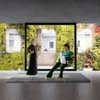
image from architects
One Hyde Park Architect : Rogers Stirk Harbour + Partners
One Hyde Park flats : Background on the development
One Hyde Park apartments : Photographs of property under construction
One Hyde Park neighbour : Mandarin Oriental Hyde Park Hotel, Knightsbridge
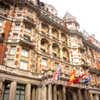
picture © Adrian Welch
Harvey Nichols, Sloane Street / Knightsbridge
Hyde Park context : West End buildings
Comments / photos for the Museum of Language London Architecture Competition page welcome

